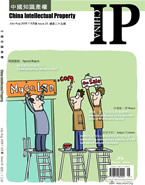

On November 3, 1900 in Herzogenaurach, a small German town, a child was born to the Dassler family, by the name of Adolf. He was nicknamed Adi.
Since the 1700’s, Herzogenaurach had earned a name for cloth fabrication.
Adi’s fatherwas a respected cloth maker, but he did not want Adi to follow his footstep. He thought that in the war-looming Germany, the only one who did not have to worry about a job, apart from a butcher, would be the baker, for people could do without shoes, but not bread. Thus, when the Great War broke out, Adi was sent to apprentice in a bakery.
However, the passionate athlete Adi was not content with ordinary apprenticeship. In 1920, he handmade his first sports shoes in his mother's laundry out of the canvas left over from the War. He then made this his first tiny shoe factory which he ran differently from others: he would allow the patrons to try them on, and for free. One month later, the patrons returned, some to buy, and some to order more. Thus, he built his own market. Seven years later, Adi and his brother, Rudolf, set up their company the Dassler Brothers Shoe factory. Their sports shoes were well known locally and they started to receive orders from other places.
However, in 1948, the brothers split up over disagreements. Adi named his new company “Adidas” with his nickname and the first three letters of his last name. One year later Adidas produced the first pair of sports shoes adopting Adi’s unmistakable three strips logo,and applied three strips as its registered trademark. The three strips was Adi’s unique originality, he believed that sports shoes would make athletes more comfortable by using three strips at their sides. This trademark had been used since then, and is known as the “triumphal three strips” in the sports field all along.
For the first time in 1972, Adidas became an official sponsor of the Olympic Games and the “Trefoil Logo” was introduced. The “Trefoil” stood for the spirit of the Olympic Games and linked the three continental plates. Also, the “Trefoil” coordinated with the existing “three strips”. In 1978, Adi passed away, and his family took charge of the company. After 1989, Adidas was transformed into a joint-stock company.
In 1997, Adidas acquired the Salomon group, and the company’s name changed to Adidas-Salomon AG. On January 31, 2006, Adidas-Salomon AG acquired Reebok International Ltd. The closing of the Reebok transaction marks a new chapter in the history of the Adidas Group. By combining two of the most respected and well-known brands in the worldwide sporting goods industry, the new Group will benefit from a more competitive worldwide platform, well-defined and complementary brand identities, a wider range of products, and a stronger presence across teams, athletes, events and leagues.
Now, Adidas’ brand structure was transformed into three different divisions: Sports Performance, Originals and Sports Style Y-3, which were different from the traditional sports shoes and cloth’ logo. This transformation came from the revolution to Adidas’ logo in 2002.
The Sports Performance division maintained the largest percentage and its products resulted from innovative technology.
Originals stood for the particular series of product line of Adidas, was a symbol of return to the classic style.
Sports Sstyle Y-3 was the youngest division, and resulted from the collision of ideas from designer Yohji Yamamoto and Adidas. Y stood for Yohji Yamamoto and 3 from Adidas’ classic Three Stripes. Y-3 was aimed at upper class urbanites hunting for fashion and individuality.
(Translated by Athena Ma)
|
Copyright © 2003-2018 China Intellectual Property Magazine,All rights Reserved . www.chinaipmagazine.com 京ICP备09051062号 |
|
|



